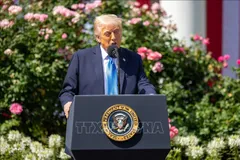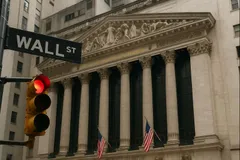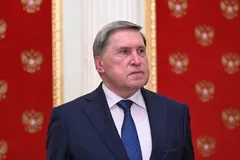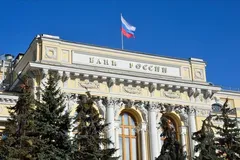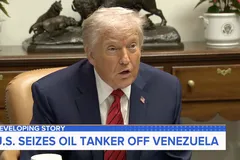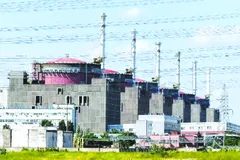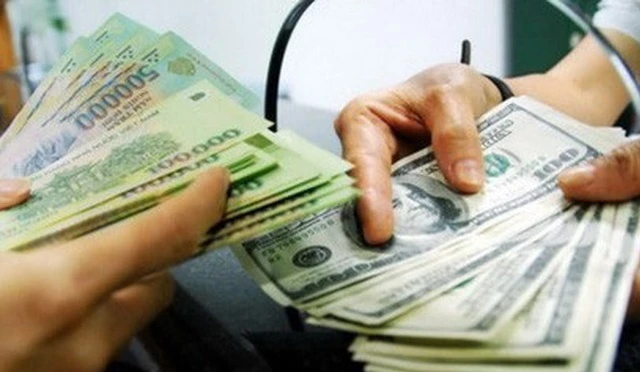
This sudden rise will now put great pressure on the Vietnam Dong as well as create immense difficulties for Vietnam's monetary policy.
Dong under pressure
Soon after the FED raised the interest rate for the third consecutive time, the operating interest rate increased 3% to 3.25%, the highest since early 2008. FED officials now say that interest rates will be much higher in the near future accompanied by weaker economic growth. Interest rates are forecast to peak at around 4.4% by the end of the year, higher than market expectations and 1% higher than the FED estimated three months ago.
Soon after the DXY index hit a new 20-year high of 111.63, the Euro fell to a 20-year low, with 1 Euro value dropping to USD 0.9810. The British pound hit a 37-year low, and the Australian, Canadian, and Singaporean dollars hit two-year lows. China's yuan also hit a two-year low and the Yen hovered near a 24-year low as investors awaited the Bank of Japan meeting.
In Vietnam as of 16 September, the dong depreciated by 3.62% against the US dollar since the beginning of the year and is continuing to decline after the FED raised interest rates by 0.75% for the third time. The Vietnam dong as announced by the State Bank of Vietnam at a session on 22 September bounced up to VND 23,316 per one US dollar.
On the same day, the exchange rate listed at commercial banks increased sharply. The buying price fluctuated between VND 23,515 to VND 23,600 against one USD. On the selling side, the lowest price was VND 23,820 per one US dollar and the highest selling price was VND 23,950 per one US dollar. This is the highest level ever and is close to VND 24,000 per one US dollar. On the free market, the US dollar traded at VND 24,060 to VND 24,130 per one USD.
Despite the drastic increase in interest rates by the FED, the Vietnam dong is still among the group with the least devaluation compared to the other countries in the region and the world. This result was achieved because of the State Bank of Vietnam implementation of money supply regulation through the open market in recent years, which reduced pressure on the exchange rate.
In turn, the cost of exchange rate stability also increased and the interest rate for issuing 14-day State Bank of Vietnam bills increased from 2.6% per year to 4% per year in August. In the past, the State Bank of Vietnam had also sold a relatively large amount of foreign currency. According to estimates, from the beginning of the year till the end of June 2022, the State Bank of Vietnam has sold upto USD 15 bln. Since July 2022, an estimated USD 5.7 bln has been sold, resulting in a drop in foreign exchange reserves to around USD 90 bln. However, the pressure has not stopped and continues to cause stress across markets.
Dong still stable
According to the latest data released by the General Department of Customs, the total import and export value of the country in the first eight months of 2022 reached USD 499.71 bln. In this, exports reached nearly USD 252.6 bln and imports reached USD 247.11 bln, with a trade surplus of USD 5.49 bln.
According to the General Statistics Office, the Foreign Direct Investment (FDI) in the first eight months of 2022 was estimated at USD 12.8 bln, up 10.5% over the same period last year. Besides, end of the year remittances will also flow into Vietnam more actively. At the same time, the difference between the exchange rate on the free market and the official market has now narrowed. These are positive supporting factors for the Vietnam Dong.
However, on the other hand, the FED and major central banks are both expected to continue raising interest rates in the second half of 2022. At the same time, the FED is expected to shrink about USD 400 bln on its balance sheet by the end of 2022. Bank of England (BOE), and the European Central Bank (ECB), also plan to tighten quantitatively.
Morgan Stanley estimates that the balance sheets of central banks will shrink by about USD 4,000 bln by the end of 2023. The global supply chain has not yet recovered after a long period of disruption, which is now increasing transportation costs that can affect import and export activities. Another factor is that the yuan has fallen 8.5% in a 2-year low with seven yuan for one USD. All of these factors could affect the value of the Vietnam Dong in the coming months.
This situation requires the State Bank of Vietnam to continue to closely monitor developments in order to control the exchange rate because this is also related to inflation control. Dr. Trương Văn Phước, former Acting Chairman of the National Financial Supervisory Commission, assessed that the State Bank of Vietnam did a good job so that the central exchange rate only increased by about 0.6% since the beginning of the year and allowed the market to fluctuate within the range of plus or minus 3%. This helped stop inflation in Vietnam.
In the last two months, the State Bank of Vietnam has continuously adopted various measures to maintain a positive difference between the Vietnam Dong and the US Dollar interest rate on the interbank market and ensure that the value of the Vietnam Dong remains relatively stable against the US Dollar. The State Bank of Vietnam has resorted to overnight lending operations to attract more money and is also selling off foreign currencies. On the other hand, these moves have caused the liquidity of the Vietnam Dong to fall into tension, and the interest rate has climbed sharply in both market 2 and market 1.
However, according to Dr. Lê Xuân Nghĩa, an economist, Vietnam must be very wary of the exchange rate that is likely to continue to depreciate significantly. Therefore, the question is whether the State Bank of Vietnam should raise interest rates next time, and if not, it will mean selling foreign exchange reserves to stabilize the exchange rate. According to Dr. Phước, currently, Vietnam's positive real interest rate is still very high. If the US raises interest rates, it is not good for the State Bank of Vietnam to leave the six-month deposit rate ceiling at 4% per year. He suggested that the State Bank of Vietnam should raise the deposit rate ceiling to create a currency swap between the US Dollar and the Vietnam Dong.




